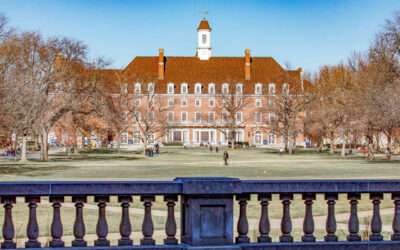The University of Missouri–St. Louis continues to build its connections with the rapidly developing geospatial ecosystem that’s been sprouting up throughout St. Louis alongside construction of the National Geospatial-Intelligence Agency’s new west campus northwest of...
Core Geospatial Science
A River Runs Through It
Jordan Neeley, a junior studying environmental earth science at Washington University in St. Louis, once asked the same question that many visitors ask: What is a shut-in? Rock formations called shut-ins confine a section of a river, forcing water to flow between the...
NCSA’s Blue Waters Supercomputer Helps Map the Earth
One of the earliest projects to ramp up after NCSA launched the Blue Waters supercomputer in 2013 was a project from the University of Minnesota’s Polar Geospatial Center. They wanted to make high-quality digital elevation models, or DEMs, for the polar ice. Their...
As St. Louis’ Reputation Grows in the Geospatial Industry, Leaders Stress Workforce Development
St. Louis – Local civic leaders are pinning their hopes on the geospatial sector to help boost the region’s economy and create jobs. As the National Geospatial-Intelligence Agency constructs its $1.7 billion western headquarters in north St. Louis, a four-day...
NGA, UMSL partnering to develop STEM professionals and educators
The National Geospatial-Intelligence Agency and University of Missouri–St. Louis are partnering to create a geospatial talent pipeline that supports student learning from kindergarten through college and beyond. Under a new educational partnership agreement, UMSL...
Danforth Center Wins $1.5M EDA Grant to Lead New Center for AgTech and Applied Location Science and Technology
The Donald Danforth Plant Science Centerhas won a $1.5 million competitive Build to Scale grant from the US Department of Commerce Economic Development Administration (EDA) to support theCenter for AgTech and Applied Location Science and Technology (CATALST). The...
U of I Leads New $15 Million Institute to Understand Climate Change and Disasters
Institute will focus on innovative cyberGIS and cyberinfrastructure A new national initiative to enable geospatial data-driven scientific discovery will create a $15-million institute at the University of Illinois Urbana-Champaign to better understand the risks and...
SLU, NGA Host Geo-Resolution 2021 Conference
Geo-Resolution 2021: Building a 21st Century Geospatial Ecosystem From Hard Problems to Opportunities was co-hosted by Saint Louis University and the National Geospatial Agency (NGA). The conference returned to the Wool Ballrooms at Busch Student Center on SLU campus...
College Students Map North St. Louis, Develop Geospatial Skills at GeoHornet Mapathon
The OpenStreetMap program has a more detailed and accurate depiction of north St. Louis, thanks to 12 Harris-Stowe State University students who participated in the GeoHornet Mapathon March 19, hosted by Harris-Stowe State University with participation by Maxar and...
SLU Researchers Develop App to Track COVID-19 Symptoms
As the COVID-19 pandemic spread across the world, researchers pondered the spread of the disease and what the risks of individual and community transmission rates were in various locations. To address this, SLU researchers Enbal Shacham, Ph.D., a professor of...
Nadia Shakoor Wants to Change the Face of Farming with Drones
Several years ago, Nadia Shakoor went looking for something that didn’t exist. As a breeding and genetics researcher at the Donald Danforth Plant Science Center, Shakoor was measuring how crops grew under specific conditions. She sent students with clipboards into...
Research Links Sinking Land to Regions of High Groundwater Demand
Images indicate the estimated rate of land subsidence in areas with high groundwater use in the western U.S. Excessive pumping from underground aquifers can cause the surrounding land to sink and lead to damage to streets, bridges and other infrastructure, reduced...












